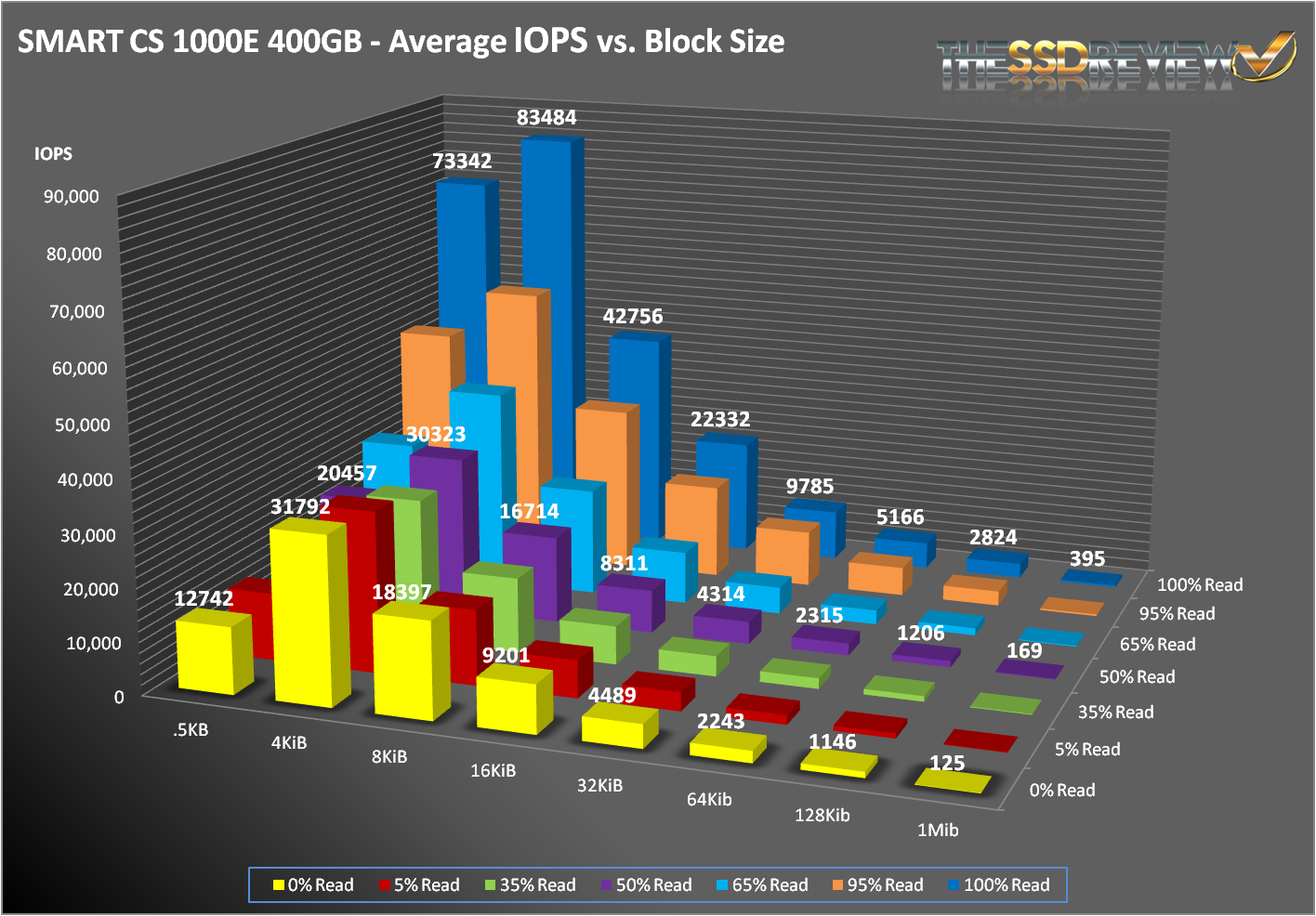SNIA IOPS TESTING
The Storage Networking Industry Association has an entire industry accepted performance test specification for solid state storage devices. Some of the tests are complicated to perform, but they allow us to look at some important performance metrics in a standard, objective way.
SNIA’s Performance Test Specification (PTS) includes IOPS testing, but it is much more comprehensive than just running 4KB writes with IOMeter. SNIA testing is more like a marathon than a sprint. In total, there are 25 rounds of tests, each lasting 56 minutes. Each round consists of 8 different block sizes (512 bytes through 1MB) and 7 different access patterns (100% reads to 100% writes). After 25 rounds are finished (just a bit longer than 23 hours), we record the average performance of 4 rounds after we enter steady state.
- Preconditioning: 3x capacity fill with 128K sequential writes
- Each round is composed of .5K, 4K, 8K, 16K, 32K, 64K, 128K, and 1MB accesses
- Each access size is run at 100%, 95%, 65%, 50%, 35%, 5%, and 0% Read/Write Mixes, each for one minute.
- The test is composed of 25 rounds (one round takes 56 minutes, 25 rounds = 1,400 minutes)
As we noted earlier, the 1000E struggled some with 512 byte transfers, scoring lower IOPS than 8KB transfers. Other than that anomaly, the results were pretty straightforward. Results scaled well across all access patterns. When compared to the S3500, the 1000E bested the Intel offering on most tests. The 1000E has a clear and overwhelming advantage with random writes. The only area where Intel was able to sneak out a win was in the 95/5 read/write access specification at lower block sizes. For that test, Intel was able to avoid the dramatic drop-off that we observed with the 1000E.
 The SSD Review The Worlds Dedicated SSD Education and Review Resource |
The SSD Review The Worlds Dedicated SSD Education and Review Resource | 


Why is it that “Enterprise” SSDs do not have SAS interface?
Without SAS “Enterprise” devices should really be called “Prosumer”.
That’s a heck of a jump considering the large number of enterprise systems that utilize the SATA interface. I am not aware of many prosumer sales for a product such as this, however sales of the original 500 version would have justified the initial investment for development of the drives.
One step at a time…
At SNIA’s IOPS test, which QD did u used for the test? 4? 16? 32?? 128???
ki – We use a QD of 32, unless otherwise noted. I’ll make sure to call that out next time.
Very slowly recognition In Lenova T61, difficult to use it, Have you any idea about this problem ?
How did you do secure erase? I had one, but got failure message for secure erase. thanks. I can do secure erase for other drive including some Datacenter drives. thanks.
You need to put the computer to sleep and then wake it up, otherwise its stuck in freeze state.
But if frozen, I get the message that the drive is frozen. But this case, I just got : secure erase not completed successfully. I checked this drive by Intel RST, but not frozen status actually. Any advice will be great for me.